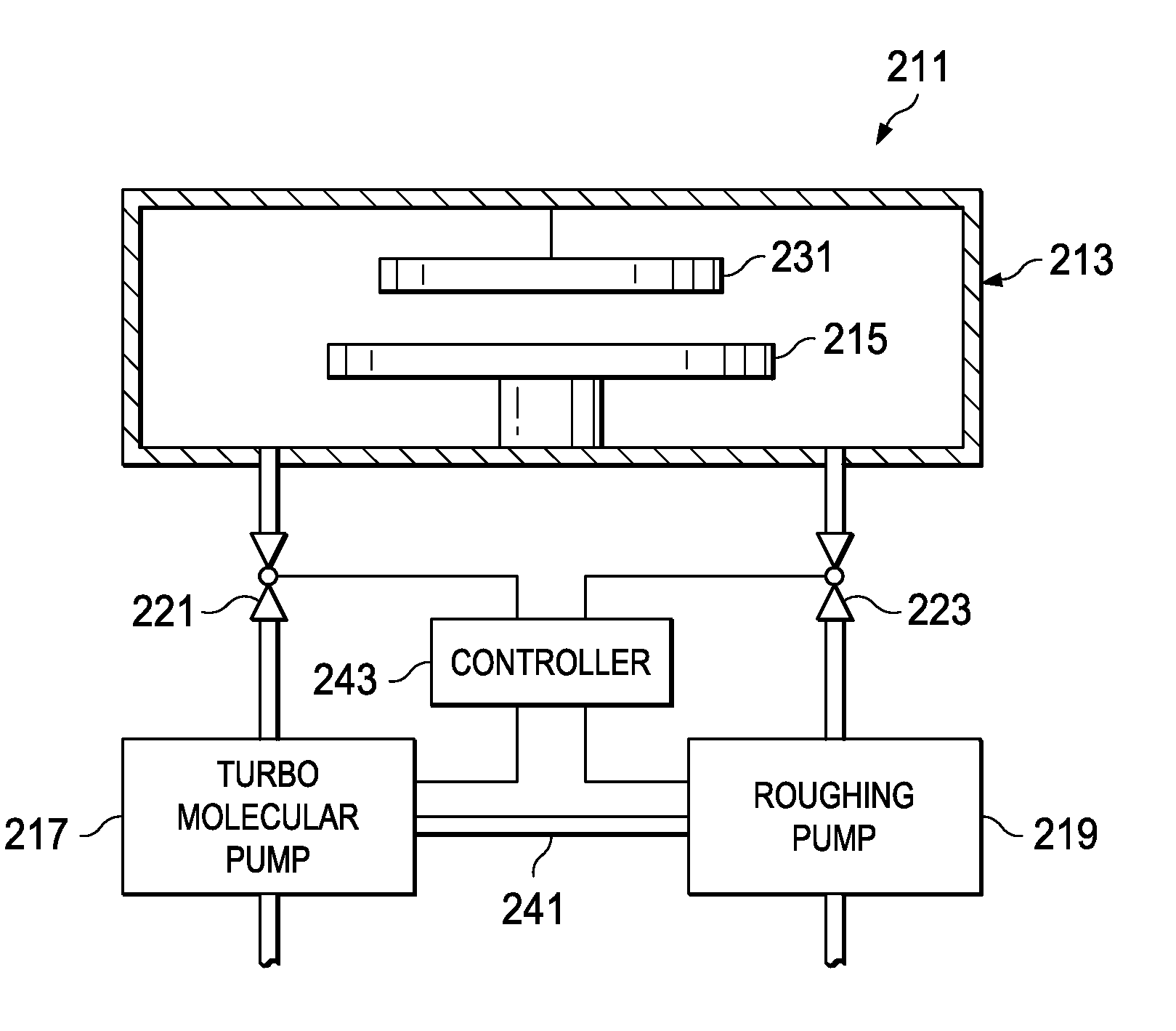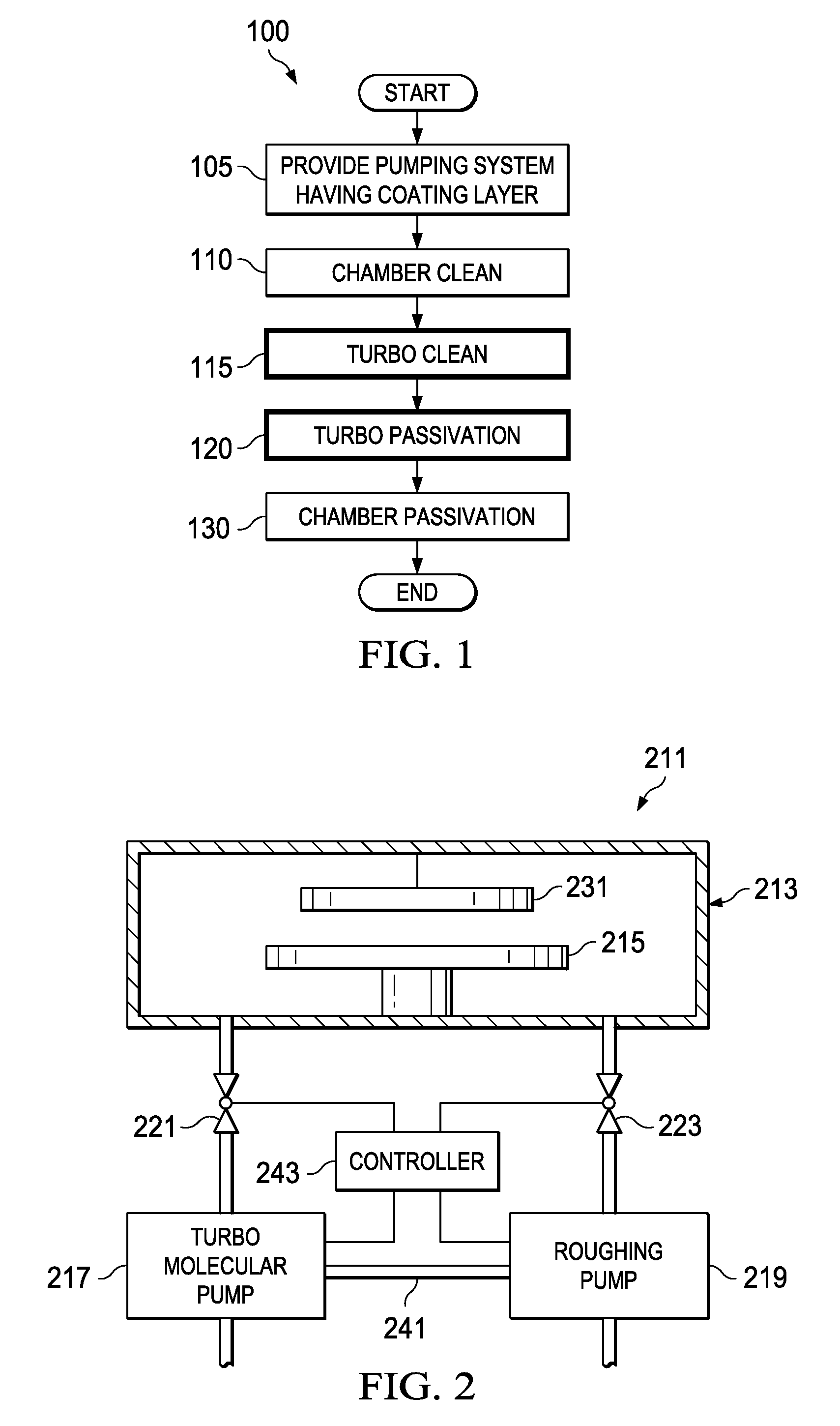Automatic insitu post process cleaning for processing systems having turbo pumps
a technology of processing system and turbo pump, which is applied in the direction of electrostatic cleaning, crystal growth process, chemical vapor deposition coating, etc., can solve the problems of inability to run production, significant source of particles, and significant end of line yield loss
- Summary
- Abstract
- Description
- Claims
- Application Information
AI Technical Summary
Benefits of technology
Problems solved by technology
Method used
Image
Examples
examples
[0022]Parameters for an exemplary process system clean sequence including automatic turbo clean 100 described above relative to FIG. 1, is provided below in the case of a HDP oxide deposition system, according to a particular embodiment of the invention. Step 110, RF chamber clean, can be broken up into two sub-steps. The first sub-step can comprise a high flow RF chamber clean (NF3 flow=800 to 990 sccm, O2 flow=100 sccm, pressure=1 to 2 Torr, high frequency (e.g. 13.56 MHz) RF power=4,000 to 4,300 Watts). The second sub-step can comprise a low flow chamber clean (NF3 flow=100 to 300 sccm, O2 flow 0 to 30 sccm, pressure=1 to 2 Torr, high frequency (e.g. 13.56 MHz) RF power=4,000 to 4,500 Watts). Step 115, the automatic turbo clean, can comprise (NF3 flow=990 sccm, O2 flow=100 sccm, pressure=˜100 mTorr (not actively controlled), and high frequency (e.g. 13.56 MHz) RF power=4000 Watts. Automatic Turbo passivation, step 120 can comprise H2 flow=1000 sccm, O2 flow=300 sccm, Ar flow=300 ...
PUM
| Property | Measurement | Unit |
|---|---|---|
| pressure | aaaaa | aaaaa |
| total time | aaaaa | aaaaa |
| pressure | aaaaa | aaaaa |
Abstract
Description
Claims
Application Information
 Login to View More
Login to View More - R&D
- Intellectual Property
- Life Sciences
- Materials
- Tech Scout
- Unparalleled Data Quality
- Higher Quality Content
- 60% Fewer Hallucinations
Browse by: Latest US Patents, China's latest patents, Technical Efficacy Thesaurus, Application Domain, Technology Topic, Popular Technical Reports.
© 2025 PatSnap. All rights reserved.Legal|Privacy policy|Modern Slavery Act Transparency Statement|Sitemap|About US| Contact US: help@patsnap.com


